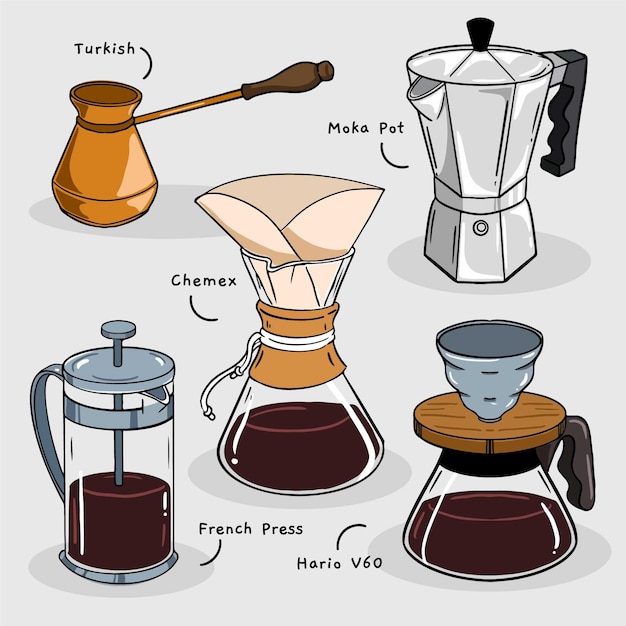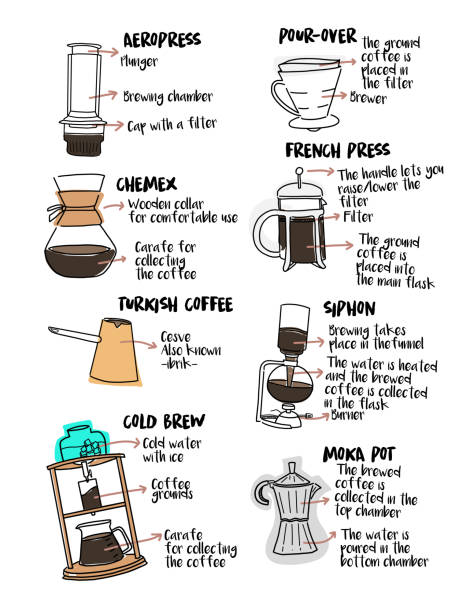Exploring the most effective Coffee Brewing Methods for Perfect Taste Each Time
Exploring the most effective Coffee Brewing Methods for Perfect Taste Each Time
Blog Article
Checking Out the Art of Coffee Brewing: A Comprehensive Overview to Developing Your Cup
The art of coffee brewing is a diverse technique that merges science with individual expression, where the choice of beans, water top quality, and developing approaches converge to develop a polished sensory experience. Recognizing the subtleties of various coffee beans, specifically the distinctions between Arabica and Robusta, is necessary for any type of connoisseur. The choice of ideal devices and meticulous interest to developing specifications can significantly influence the last outcome. As we check out these aspects, one must think about just how even small modifications can result in profound changes in taste and aroma-- what might these adjustments expose about your perfect mug?
Recognizing Coffee Beans
To absolutely appreciate the art of coffee developing, one need to initially recognize the fundamental component: coffee beans. These small seeds, generally stemmed from the Coffea plant, are critical in determining the flavor profile, scent, and general high quality of the brewed drink. Coffee beans mainly fall into two categories: Arabica and Robusta. Arabica beans, known for their delicate tastes and higher acidity, are usually favored by lovers. In contrast, Robusta beans have a stronger, a lot more bitter taste and higher caffeine web content, making them suitable for coffee blends.

Additionally, the handling method-- whether cleaned, all-natural, or honey-- affects the beans' final taste. Recognizing these components enables brewers to choose the best beans that line up with their liked flavor profile, ultimately enhancing the coffee developing experience. coffee brewing methods. This comprehension is vital for any person striving to understand the craft of making the perfect cup of coffee
Brewing Methods Described
Many lovers find that the option of developing approach substantially impacts the last flavor and aroma of their coffee. Each technique utilizes various extraction techniques, influencing the coffee's character and splendor.
Drip developing, one of the most preferred methods, uses a machine to leak warm water with ground coffee, producing a tidy and regular cup. French press, on the various other hand, immerses coffee premises in warm water, enabling a fuller body and more robust flavor, as oils and fine particles stay in the mixture.
Pour-over developing provides a careful approach, where water is manually poured over coffee grounds, allowing for exact control over extraction time and temperature, leading to a nuanced and intense cup.
Espresso, a concentrated coffee brewed under pressure, is understood for its strong taste and luscious texture, acting as the base for different coffee beverages, including lattes and cappuccinos.
Vital Tools Required
The foundation of any type of effective coffee developing process exists in high quality equipment tailored to your recommended method. A trustworthy coffee grinder is important; fresh ground beans considerably boost flavor and scent.
Next, consider your brewing gadget. Alternatives range from drip coffee makers and pour-over setups to French presses and espresso makers. check it out Each approach offers distinctive flavor profiles and brewing techniques, so select one that lines up with your taste choices.
A specific scale is additionally invaluable, permitting you to determine coffee and water properly, which is essential for consistency. Furthermore, a thermometer can aid monitor water temperature level, as it straight affects extraction top quality.
Mastering Water High Quality
The high quality of water utilized in developing coffee plays a considerable role in establishing the final taste profile of the mug. Various aspects add to water high quality, consisting of mineral material, pH degree, and overall purity. Ideally, water ought to be without impurities and impurities, as these can adversely affect the taste of coffee.
Minerals, such as calcium and magnesium, enhance the removal of flavors from the coffee grounds, while preserving a well balanced pH level-- around 6.5 to 7.5-- is essential for ideal extraction. Water that is also soft may lead to under-extraction, resulting in sour or weak flavors, while excessively tough water can create a bitter or extreme mug.
For the very best results, filtered water is suggested, as it lowers the existence of chlorine and various other unfavorable substances commonly discovered in faucet water. Furthermore, consider making use of water with an Overall Dissolved Solids (TDS) level between 150-200 ppm, which is generally excellent for coffee brewing. By understanding water high quality, you can lay a solid structure for accomplishing a regularly exceptional cup of coffee, allowing the one-of-a-kind attributes of your picked beans to radiate through.

Tips for Taste Improvement
Enhancing the flavor of your coffee can significantly elevate your brewing experience and bring out the one-of-a-kind nuances of your selected beans. To achieve this, consider several vital factors that affect preference.
First of all, the work size plays a crucial function. A finer work raises removal, leading to bolder tastes, while a coarser work yields a milder cup. coffee brewing methods. Readjust your work according to your brewing method to accomplish optimum outcomes
Secondly, try out brew time. Over-extraction can lead to anger, while under-extraction lead to a sour taste. Go for a mixture time that stabilizes these extremes, usually between 2 to four minutes, relying on your method.
Furthermore, temperature level is a critical aspect. Brewing with water that is also warm can burn the coffee, while water that is as well awesome might stop working to draw out appropriate taste. The perfect temperature level variety is 195 ° F to 205 ° F(90 ° C to 96 ° C)
Final Thought) )))) In verdict, the art of coffee brewing is a diverse technique that requires a deep understanding of various elements, consisting of bean option, developing methods, and water top quality. Proficiency of vital devices and interest to information in work size, make time, and temperature level are essential for accomplishing optimum extraction. By incorporating these elements, coffee fanatics can boost their brewing strategies, causing a mug that not just pleases individual choices however likewise showcases the abundant complexity of coffee tastes.
The art of coffee next page developing is a multifaceted self-control that combines science with personal expression, where the option of beans, water high quality, and brewing techniques merge to produce a polished sensory experience.To truly value the art of coffee brewing, one should first recognize the fundamental element: coffee beans. Developing with water that is too hot can swelter the coffee, while water that is also great may fail to remove sufficient taste. In verdict, the art of coffee developing this contact form is a multifaceted method that requires a deep understanding of numerous elements, consisting of bean option, developing techniques, and water high quality. By incorporating these components, coffee enthusiasts can raise their developing techniques, resulting in a cup that not only satisfies individual preferences but likewise showcases the rich complexity of coffee tastes.
Report this page